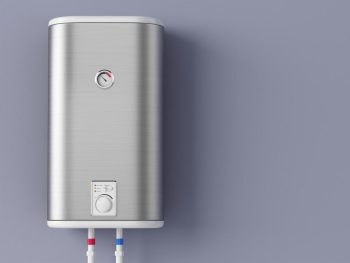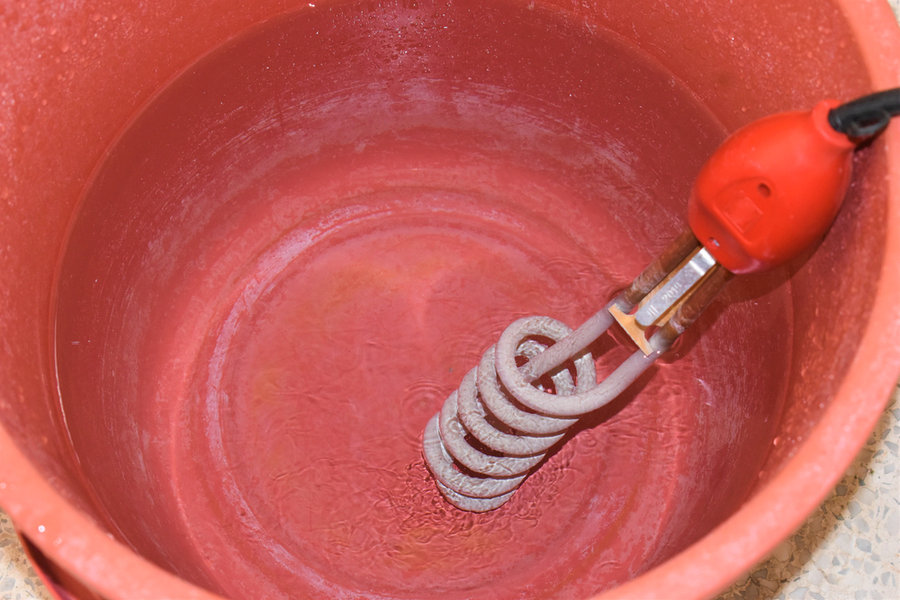
Winter months bring us to the unavoidable chore of heating water. Hot water is normally required for almost all household purposes. The traditional ways to heat the water include using a stove and storing water in hot geysers.
These methods, to an extent, are daunting and require a large amount of your time. To avoid the hassle caused by conventional water heating methods, you can look for something that can facilitate you most efficiently. Well, an immersion water heater is a thing to consider here.
An immersion water heater is a basic appliance that can heat a full water bucket in just a few minutes. It is an economical, fast, and efficient method for heating liquids.
Besides being cost-effective, this device is also ecologically sound. It provides you with a clean energy source that you can use without worrying about residual discharge or pollutants.
The immersion heater facilitates immediate and efficient heat transfer. However, before using it, you must know how to do that.
This article provides you with the basic know-how regarding constructing an immersion water heater. Also, it helps you understand the right way to use this device and some safety precautions you must remember.
To correctly use an immersion water heater and to avoid any chances of electrocution, follow the step-by-step guide provided below:
- Fill the water bucket.
- Adjust the water level.
- Place the heating rod in the water.
- Turn on the immersion water heater.
- Heat the water.
- Remove and store the equipment.
The immersion water heater is sensitive equipment. Follow the proper safety measures to prevent yourself from any chances of being electrocuted.
This article will explain using an immersion water heater with a step-by-step guide.
Construction of an Immersion Water Heater
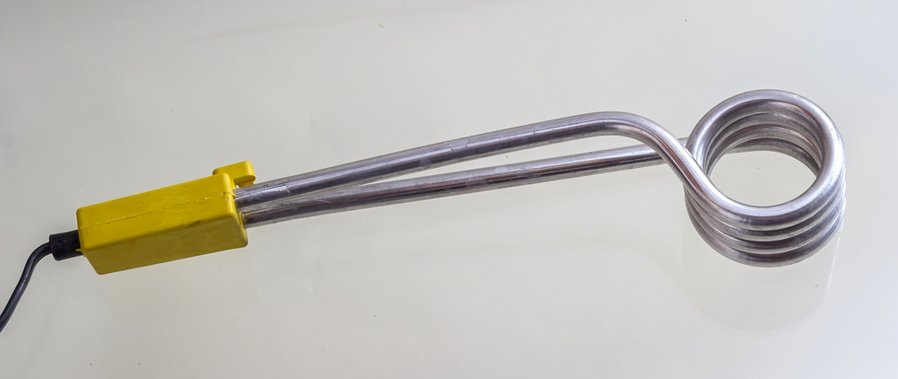
If we look at the construction of this appliance, it is quite similar to an electric iron. It consists of a heating element (a coil) and an electric element (chord) like an electric iron.
The heating element looks like a rod. It is immersed in water to heat it. The other part of the heater, i.e., the electric element, remains above the water surface and provides the power to the coil needed to heat the water.
This element should not come in contact with the water.
How To Use an Immersion Water Heater
An immersion water heater is one of the most common heating appliances people use. Being compact and portable, it is travel-friendly and easy to handle.
Though it seems easy to use, it is always better to be cautious to prevent accidents and injuries that may result from negligence.
Here is a step-by-step guide to how you can use an immersion water heater the right way:
1. Fill the Water Bucket
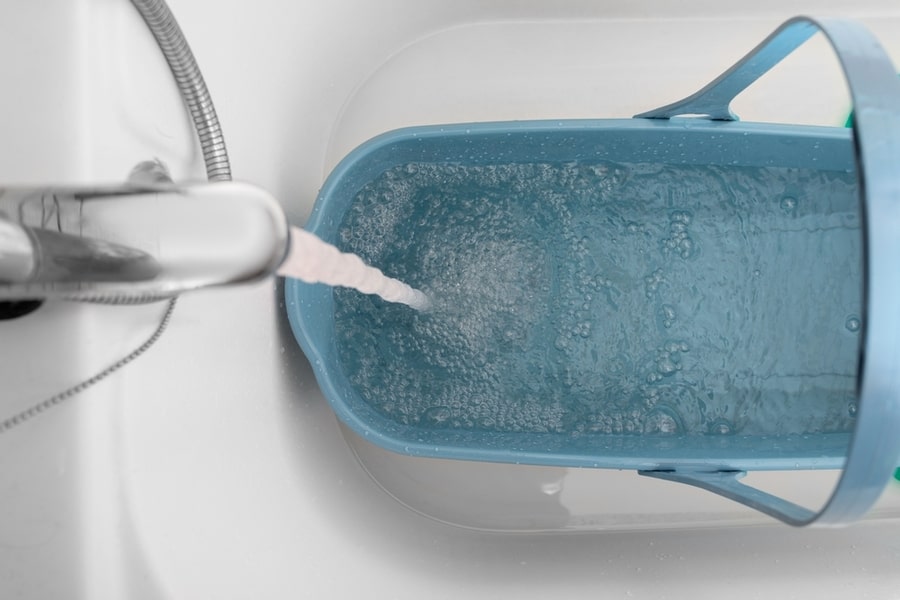
Take a bucket and fill it with the desired amount of water. Then, take out the immersion water heater and look at the markings indicating the maximum and minimum levels.
The maximum level shows the maximum amount of water you can put in the container. At the same time, the minimum level marking indicates the minimum amount of water the appliance can heat.
2. Adjust the Water Level

Ensure that the bucket’s water is not less than the minimum level or more than the maximum level. If you keep the water level lower than the minimum marking, you may burn the bucket.
Similarly, having water more than the maximum level mark may cause a short circuit or leave the water cold. This may even damage the heater’s electric circuit and make it useless.
3. Put the Heating Rod in the Water
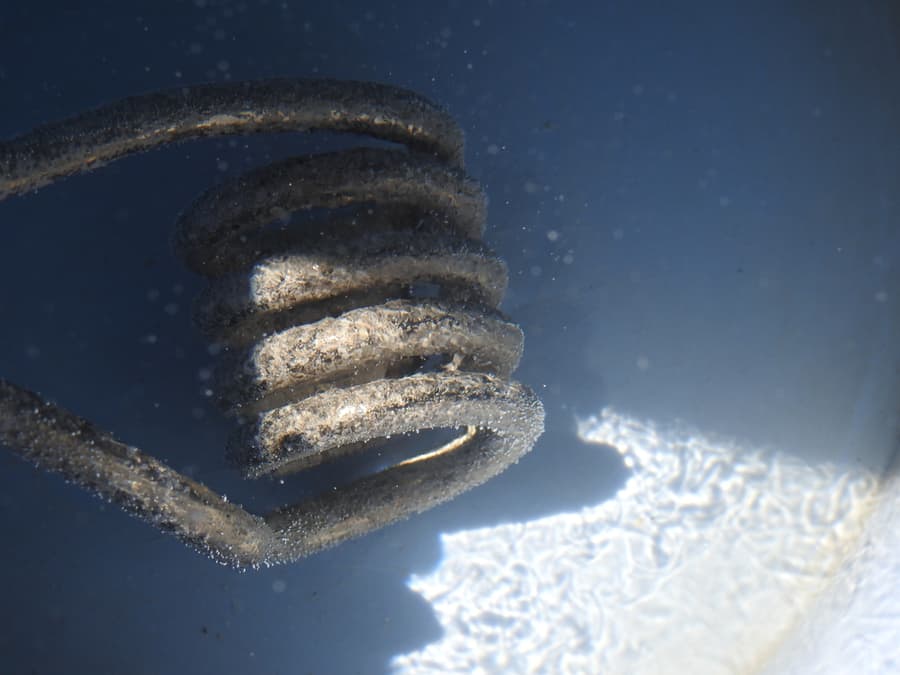
After you have filled the bucket with the required amount of water, it is time to immerse the heating rod in it. Make sure that you put the rod vertically in the water.
To heat it effectively, the spiral rod must be fully immersed in the water. However, you can keep the upper portion of the heating rod out of the water for safety.
Also, be sure not to let the heating rod touch the bucket. If the bucket is made of plastic, it will melt off and cause severe damage.
Never use a metal bucket to heat water using an immersion water heater. It can conduct electricity fast hence increasing the chances of getting electrocuted.
4. Turn On the Immersion Water Heater

In this step, you must plug the heater into a nearby power outlet. Make sure the immersion water heater is hanging vertically in the water and not lying at the bottom.
Use dry hands to turn on the switch and let the water heat.
5. Heat the Water

After switching on the device, you will heat the water for five to ten minutes.
After the water has been heated as per requirement, turn the switch off and unplug the appliance from the power outlet.
Make sure not to let the heater stay in the bucket for longer. It may damage the container that you are using.
Never touch the water to check its temperature while the electric rod is on and still in the water.
Since the water is charged and is directly in contact with the heating element, it can cause electrocution immediately, leading to severe burns or even death.
6. Remove the Heater

After unplugging the rod and switching it off, the next step is to remove the heating rod from the bucket carefully. Again, the rod would be very hot at this stage, so be extra careful.
After removing the rod, place it far away from reach so that no one in your family gets in contact with it.
By doing so, you can avoid any unwanted incidents from taking place. In addition, you can now use the water you have heated using this heating device.
Once the heating rod is dry, store it safely. Make sure it is not left wet, or it may develop rust.
Immersion water heaters are often available in different watt powers. It is up to you to choose the one that best fits your requirements.
However, whichever heater you use, you must know how to use it properly.
Safety Precautions When Handling an Immersion Water Heater

When it comes to an electric appliance, it is important to have a fair idea of how to use it. The more you use it correctly, the more likely you are to avoid accidents.
The same thing applies to an immersion water heater. While you are using an immersion water heater, you need to be careful about a few things, which are listed here:
- Remember that immersion water heaters, unlike geysers, do not have an auto-off feature. So when water heats up to the required level, you must manually switch off the appliance.
- Keep the children and pets at a distance from the immersion water heater. This is especially important to be followed when the appliance is being used and is switched on.
- Turn the switch on only when you have put the appliance in the water. Never do it before putting the appliance in the container.
- Do not directly touch the water by hand when the switch is on. This can cause electrocution, severe body burns, or even death.
- Be careful about handling the water after you have turned the switch off. Since water is extremely hot, you may burn yourself.
- Avoid using metal buckets when heating water through an immersion water heater. The reason is the metal’s electrical conductivity which may cause an electric shock.
- Always use an immersion water heater with adequate water in the container. Otherwise, you may get your bucket burnt, damaging the coil and making the appliance useless.
- Ensure you buy a good quality appliance to avoid accidents while using it. The bad quality product may prove dangerous and cause damage.
For more safety precautions, do not forget to go through the manual before putting the appliance to use. Also, since each brand is different, some brand-specific precautions may exist.
You should take them into account before using such sensitive appliances.
Conclusion
Immersion water heaters are undoubtedly one of the most useful appliances for heating water. They are fast, compact, portable, and easy to use.
Their construction is based on two elements, i.e., the heating (coil) and the electrical (chord). Though the heater may look easiest to use, there is a right way to handle it and get the most out of it.
To use an immersion water heater, first, fill the bucket with the required water and then dip the rod into the bucket.
Turn on the heater and leave it in the water until it steams. After hot water, remove the rod, dry it, and store it safely.
One must also know the safety precautions while using an immersion water heater. Therefore, following the recommended safety measures to avoid incidents is important.
Frequently Asked Questions
How Does an Immersion Water Heater Work?
An immersion water heater consists of a coil and a chord. To make it work, you must immerse the coil in the water. Then, plug the electric element, i.e., the chord, into the power outlet.
This transfers the power into the heating element, i.e., the coil. So the power here is in the form of heat.
The heat via the coil gets transferred to the liquid, which turns warm. This is how an immersion water heater works and gets heated.
What Are the Various Ways an Immersion Water Heater Can Be Used?
An immersion water heater is one of the multi-purpose appliances. It is used in multiple industries, like gas/oil, wastewater management, food processing, cement curing, etc.
In each industry, this appliance serves various purposes. Besides you can also use this device for heating, bathing water, pools, kitchen equipment, etc.
An immersion water heater fulfills your needs in the coldest months. In addition, it covers your hot water requirements, which you come across for various household purposes.
What Are the Types of Immersion Water Heaters?
An immersion water heater can be categorized into the following two types, i.e., direct and indirect.
Direct immersion heaters have an electric element and a heating element. The heating element is placed directly into the water to heat it.
An indirect immersion heater relies on radiation or convection to heat the water.
Over-the-side and in-line immersion heaters are classified as indirect. In addition, pipe and infrared immersion heaters come in the indirect category.








